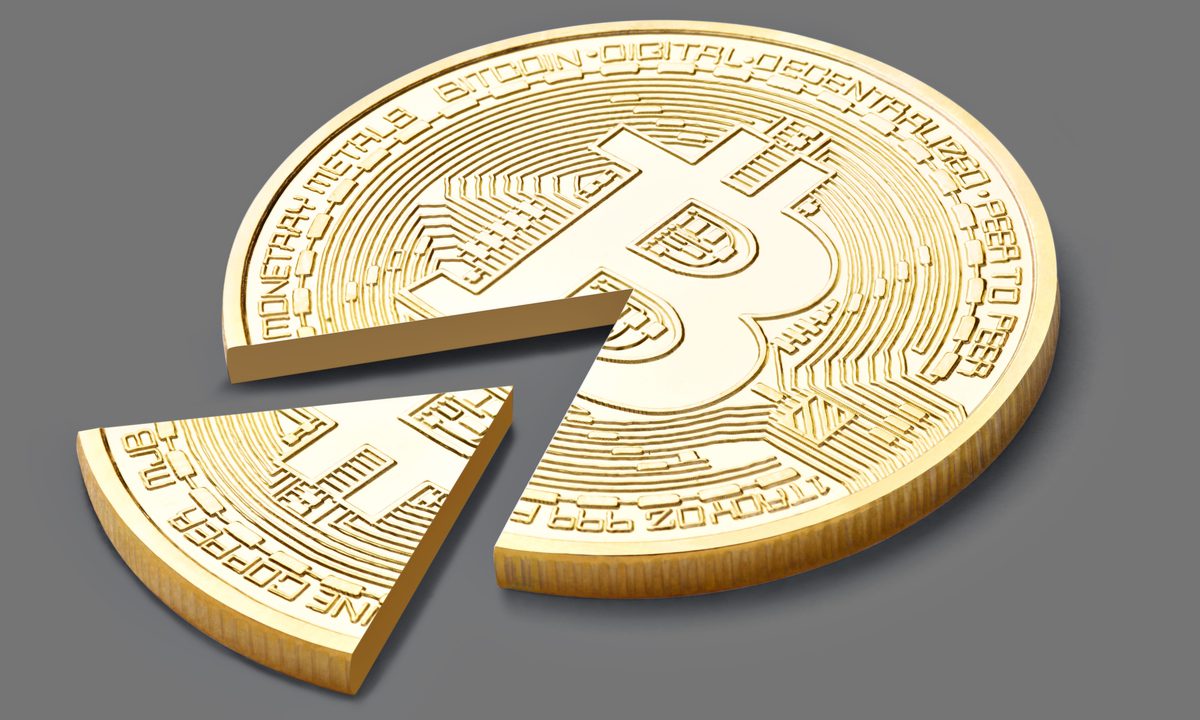Introduction
Welcome to the world of cryptocurrencies, where Bitcoin has taken the financial landscape by storm. Bitcoin, the first and largest cryptocurrency, has gained immense popularity and sparked a revolution in the digital economy. But have you ever wondered about the smaller units that make up a Bitcoin? That’s where Satoshis come into play.
Satoshis are the smallest unit of measurement in Bitcoin. They are named after the mysterious creator of Bitcoin, Satoshi Nakamoto. Just like pennies in a dollar, Satoshis represent the fractional units of Bitcoin. Understanding the relationship between Satoshis and Bitcoin is crucial for anyone venturing into the world of cryptocurrencies.
In this article, we will explore the fascinating concept of Satoshis, understand their significance in the Bitcoin ecosystem, and delve into how they are calculated and used. So, buckle up as we dive into the world of Satoshis and their role in the ever-evolving realm of Bitcoin.
What is a Satoshi?
Before we delve deeper into the realm of Satoshis, let’s understand what exactly they are. A Satoshi is the smallest unit of measurement within the Bitcoin cryptocurrency system. It is named after Satoshi Nakamoto, the pseudonymous creator of Bitcoin. Just as a dollar is divisible into 100 cents, a Bitcoin can be divided into 100 million Satoshis.
To put it simply, a Satoshi represents a fraction of a Bitcoin. It is the digital equivalent of a penny or a cent in traditional currency. Satoshis allow for intricate transactions and enable the exchange of even the tiniest amounts of Bitcoin. This divisibility is crucial for the practical use and adoption of Bitcoin in everyday transactions.
The term “Satoshi” might seem complex, but it is just a name assigned to the smallest unit of Bitcoin. In essence, it represents the foundational building block of the digital currency ecosystem. As the popularity and value of Bitcoin have grown, the importance of Satoshis has also escalated.
Understanding the concept of Satoshis is not only important from a practical standpoint but also demonstrates how Bitcoin was designed with scalability and divisibility in mind. It showcases the ingenuity of the cryptographic systems and the ability to transact efficiently, regardless of the size of the transaction.
What is a Bitcoin?
Bitcoin is a groundbreaking digital currency that has gained significant attention and popularity since its inception in 2009. It was created by an anonymous individual or group of individuals known by the pseudonym Satoshi Nakamoto. Bitcoin is often referred to as a decentralized digital currency, meaning that it operates without the control or regulation of a central authority, such as a government or bank.
Bitcoin was introduced as an alternative to traditional fiat currencies, aiming to eliminate the limitations and inefficiencies associated with them. It utilizes a decentralized ledger called the blockchain, which records all transactions and ensures their security and transparency.
Unlike traditional currencies, which are physical representations of value like coins or banknotes, Bitcoin exists solely in digital form. It can be stored in digital wallets and transferred electronically between users. One of the key features of Bitcoin is its limited supply. There will only ever be 21 million Bitcoins in existence, ensuring scarcity and, in turn, maintaining its value.
Bitcoin operates on a peer-to-peer network, allowing individuals to send and receive funds directly without the need for intermediaries. Transactions are verified by network nodes through cryptography, making them secure and resistant to fraud.
Since its inception, Bitcoin has been adopted by various industries and is widely accepted as a form of payment at numerous merchants and online platforms. It offers advantages such as low transaction fees, cross-border accessibility, and privacy.
Furthermore, Bitcoin has become an attractive investment asset, with many individuals and institutions purchasing and holding it as a store of value or speculative investment. The value of Bitcoin fluctuates based on market demand and supply dynamics, similar to traditional assets like stocks or commodities.
Overall, Bitcoin represents a revolutionary form of currency and has sparked the development of numerous other cryptocurrencies. Its decentralized nature, security, and potential for financial freedom have attracted a global community of supporters and users.
The Relationship Between Satoshi and Bitcoin
To understand the relationship between Satoshi and Bitcoin, it’s important to grasp the concept of Satoshi as the smallest divisible unit of the cryptocurrency. As mentioned earlier, one Bitcoin can be divided into 100 million Satoshis.
Think of Bitcoin as a digital currency with Satoshis serving as its fractional units. Just as cents are to dollars, Satoshis are to Bitcoin. They allow for more precise transactions and enable users to exchange even the smallest amounts of Bitcoin.
The relationship between Satoshi and Bitcoin goes beyond mere divisibility. It symbolizes the scalability and flexibility of the cryptocurrency. With the value of one Bitcoin having reached significant heights, Satoshis provide a way to transact with units that are fractionally smaller and more affordable.
For instance, if the price of a Bitcoin is $50,000, the value of one Satoshi would be $0.0005. This level of precision allows individuals to engage in microtransactions, making Bitcoin more practical for day-to-day use.
Furthermore, the relationship between Satoshi and Bitcoin showcases the inclusive nature of the cryptocurrency. Bitcoin does not discriminate against small transactions. Whether you want to send a large sum or a minuscule amount, the divisibility of Bitcoin ensures that it can accommodate any transaction size.
Satoshis also play a crucial role in fostering adoption and accessibility. Not everyone can afford to purchase an entire Bitcoin, especially with its high price. However, with Satoshis, even those with limited resources can participate in the Bitcoin ecosystem and experience the benefits of digital currency.
Additionally, Satoshis help preserve the scarcity and value of Bitcoin. With only 21 million Bitcoins available, the divisibility into Satoshis ensures that the supply remains sufficient to serve a global user base. It ensures that as Bitcoin’s value increases, people can still engage in transactions using smaller units without excessively devaluing the cryptocurrency.
Overall, the relationship between Satoshi and Bitcoin highlights the practicality, inclusivity, and scalability of the cryptocurrency. It demonstrates the foresight of its creator, Satoshi Nakamoto, in designing a system that can accommodate transactions of all sizes while maintaining the value and integrity of Bitcoin.
How Many Satoshis are in a Bitcoin?
To determine how many Satoshis are in a Bitcoin, we need to consider the decimal places of Bitcoin. Bitcoin is divisible up to eight decimal places, with the smallest unit being the Satoshi.
At the base level, one Bitcoin is equal to 100 million Satoshis. This means that there are 100,000,000 Satoshis in a single Bitcoin.
To put it in perspective, if the price of one Bitcoin is $50,000, then one Satoshi would be valued at $0.0005. It’s essential to understand that the value of Satoshis fluctuates with the price of Bitcoin. As the price of Bitcoin rises or falls, the value of each Satoshi in terms of fiat currency will adjust proportionally.
It’s worth noting that while the total supply of Bitcoin is capped at 21 million, the supply of Satoshis is virtually infinite due to their decimal divisibility. This means that as the demand for Bitcoin grows, the number of Satoshis available will always be sufficient to accommodate the needs of users, no matter how small the transaction amount.
Understanding the quantity of Satoshis in a Bitcoin is crucial for individuals looking to engage in Bitcoin transactions, investments, or even just learning about the cryptocurrency. Being able to calculate the value of Satoshis not only allows for better comprehension of Bitcoin’s divisibility but also facilitates precise transactions at any desired value within the cryptocurrency network.
So, the next time you hear someone referencing Satoshis, you’ll be aware that it represents the smallest unit of Bitcoin and that there are 100,000,000 Satoshis in a single Bitcoin.
Why are Satoshis Used?
Satoshis serve a crucial role in the Bitcoin ecosystem and are used for several reasons that contribute to the practicality and functionality of the cryptocurrency.
One of the primary reasons Satoshis are used is for facilitating microtransactions. Since Bitcoin is divisible to eight decimal places, Satoshis allow for the exchange of even the tiniest transaction amounts. This capability enables the seamless transfer of value, making Bitcoin practical for various use cases, such as tipping, micropayments for digital content, or paying for small goods and services.
Furthermore, Satoshis play a vital role in fostering inclusivity and accessibility. Bitcoin’s relatively high value can make it seem unaffordable for many individuals. However, with Satoshis, even those with limited resources can participate in the Bitcoin economy, as they can acquire and transact with fractional amounts of Bitcoin.
Another reason Satoshis are used is to preserve the scarcity and value of Bitcoin. With a limited supply of 21 million Bitcoins, dividing them into Satoshis ensures that the cryptocurrency can handle market demand without excessively devaluing the asset. Satoshis maintain the integrity of Bitcoin and ensure that transactions, even in small fractions, are still valuable.
Moreover, Satoshis help abstract the complexities of dealing with decimal places when transacting with Bitcoin. While Bitcoin prices are often quoted in whole numbers, Satoshis can be used when dealing with fractional amounts, simplifying calculations and reducing the likelihood of errors in transactions.
From a psychological perspective, using Satoshis can also help change the perception around Bitcoin. Some individuals may be hesitant to dive into the world of cryptocurrencies due to the perception of high entry barriers caused by the high price of a whole Bitcoin. However, by using Satoshis, newcomers can start small and gain familiarity with the technology before potentially increasing their involvement in Bitcoin.
Overall, Satoshis are used to enhance the flexibility, accessibility, and practicality of Bitcoin. They enable microtransactions, promote inclusivity, preserve scarcity, simplify calculations, and lower the psychological barrier to entry into the world of cryptocurrencies.
The Value of Satoshis
The value of Satoshis is a crucial aspect of the Bitcoin ecosystem, as it determines the purchasing power and utility of the smallest unit of the cryptocurrency.
Since Bitcoin’s inception, its value has experienced significant fluctuations. The price of Bitcoin is influenced by various factors, including market demand, adoption rates, regulatory developments, and investor sentiment. As the value of Bitcoin rises or falls, the value of Satoshis also adjusts proportionally.
Understanding the value of Satoshis is essential for individuals transacting in Bitcoin or considering it as an investment. It allows users to make informed decisions based on their desired transaction size or investment goals.
For example, if the price of one Bitcoin is $50,000, the value of one Satoshi can be calculated as $0.0005. This means that each Satoshi represents a fraction of the overall value of Bitcoin.
The value of Satoshis has both practical and psychological implications. Practically, the ability to transact in fractional amounts allows individuals to engage in microtransactions and conduct business in a more precise manner. It opens up the possibility for using Bitcoin in everyday scenarios, where small amounts are involved.
From a psychological perspective, the divisibility of Bitcoin into Satoshis helps individuals overcome the perception of Bitcoin being too expensive or out of reach. By understanding that Bitcoin can be broken down into smaller units, even newcomers can participate in the cryptocurrency ecosystem and grasp the concept of owning a fraction of Bitcoin.
Additionally, the value of Satoshis plays a role in the Bitcoin investment landscape. As Bitcoin’s price appreciates, the value of Satoshis also increases. This dynamic allows investors to accumulate Satoshis over time, potentially benefiting from the appreciation of Bitcoin’s value. It enables individuals to start small and build their Bitcoin holdings gradually.
It’s important to note that the value of Satoshis can vary depending on the price of Bitcoin and the currency used for comparison. The value in terms of fiat currencies, such as U.S. dollars or euros, will change as exchange rates fluctuate.
In summary, the value of Satoshis is an integral part of the Bitcoin ecosystem. Understanding their worth enables users to engage in transactions, make informed investment decisions, and overcome barriers related to the perception of Bitcoin’s high price. The value of Satoshis fluctuates in tandem with Bitcoin’s price, allowing for transactions at any desired value within the cryptocurrency network.
How to Convert Bitcoin to Satoshis
Converting Bitcoin to Satoshis is a straightforward process that involves understanding the decimal places and fractionality of the cryptocurrency. Here’s a simple guide on how to convert Bitcoin to Satoshis:
- First, determine the number of Bitcoin you want to convert to Satoshis. Let’s say you have 1 Bitcoin.
- Keep in mind that one Bitcoin consists of 100 million Satoshis, so multiply the number of Bitcoin by 100 million. In this case, 1 Bitcoin multiplied by 100 million equals 100 million Satoshis.
- Voila! You have successfully converted 1 Bitcoin to 100 million Satoshis.
If you want to convert a specific amount of Bitcoin to Satoshis, simply follow the same process. Multiply the desired amount of Bitcoin by 100 million to obtain the corresponding number of Satoshis.
For example, let’s say you have 0.5 Bitcoin and want to convert it to Satoshis. Multiply 0.5 by 100 million, which equals 50 million Satoshis.
It’s also worth noting that various cryptocurrency wallets and platforms have built-in conversion functionalities. These tools allow users to easily convert Bitcoin to Satoshis and vice versa without the need for manual calculations.
When conducting transactions or making payments with Bitcoin, platforms or wallets usually handle the conversion seamlessly. If you specify the amount in Bitcoin, the system automatically converts it to the corresponding number of Satoshis for precise and accurate transactions.
Converting Bitcoin to Satoshis is not only essential for understanding the fractional nature of the cryptocurrency but also for practical purposes. Using Satoshis enables more versatile and precise transactions when dealing with smaller amounts, making Bitcoin more practical for various use cases.
So, the next time you want to convert Bitcoin to Satoshis, remember the simple process of multiplying the desired amount of Bitcoin by 100 million to obtain the corresponding number of Satoshis.
Conclusion
Understanding Satoshis and their relationship to Bitcoin is essential for anyone venturing into the world of cryptocurrencies. Satoshis represent the smallest divisible unit of Bitcoin, enabling precise transactions and inclusivity within the digital currency ecosystem.
In this article, we explored the concept of Satoshis and their significance in the Bitcoin landscape. We learned that Satoshis are named after the mysterious creator of Bitcoin, Satoshi Nakamoto, and serve as the fractional units of the cryptocurrency. Just as cents are to dollars, Satoshis are to Bitcoin.
Satoshis play a vital role in the practical usage of Bitcoin, allowing for microtransactions and the exchange of even the tiniest amounts of the digital currency. They also facilitate inclusivity, allowing individuals with limited resources to participate in the Bitcoin economy by acquiring and transacting with fractional units of Bitcoin.
Furthermore, we discussed the value of Satoshis, which fluctuates in tandem with the price of Bitcoin. Understanding the value of Satoshis enables users to engage in transactions, make informed investment decisions, and overcome barriers related to the perception of Bitcoin’s high price.
To convert Bitcoin to Satoshis, one simply needs to multiply the desired amount of Bitcoin by 100 million, as each Bitcoin consists of 100 million Satoshis.
In summary, Satoshis are the building blocks of Bitcoin, representing its divisibility, practicality, and value. They allow for precision and inclusivity in transactions, making Bitcoin accessible to users of all financial capacities. Understanding Satoshis enhances our comprehension of the fundamental aspects of Bitcoin and its potential to revolutionize the financial landscape.

























